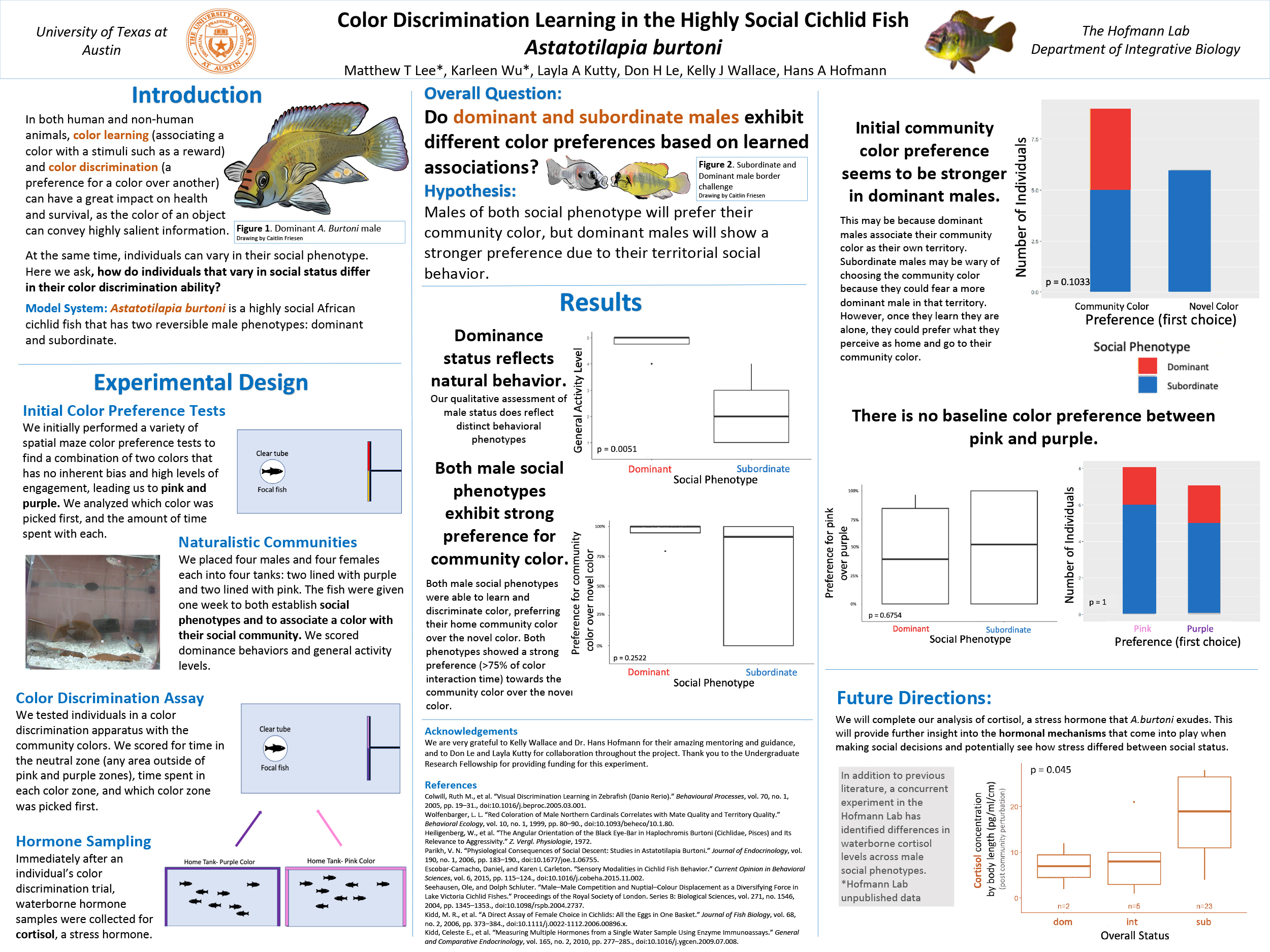Matthew T Lee*, Karleen Wu*, Layla A Kutty, Don H Le, Kelly J Wallace, Hans A Hofmann
In both human and non-human animals, color learning (associating a color with a stimuli such as a reward) and color discrimination (a preference for a color over another) can have a great impact on health and survival, as the color of an object can convey highly salient information (for example, the presence of a predator, or a high quality mate, or appropriate food). At the same time, individuals can vary in their social phenotype. Here we ask, how individuals that vary in social status differ in their color discrimination ability? To explore this question, we used Burton’s Mouthbrooder (Astatotilapia burtoni), a highly social African cichlid fish that has two reversible male phenotypes: dominant and subordinate. Dominant males are characterized by aggressive behavior, territory defense and brighter body coloration, while subordinate males are characterized by passive behavior and dull coloration. Do these phenotypes exhibit different patterns of color learning? We placed dominant and subordinate males in tanks lined with a specific color to facilitate color association with a social stimulus. To test the color association, we placed one fish at a time in a color discrimination apparatus with a barrier on one side with two colors, a novel color and the familiar tank color. We recorded the amount of time each fish spent with each specific color or a neutral zone. Immediately after this task, we measured waterborne levels of the hormone cortisol, which regulates the response to stressful stimuli. We compared how these levels related to task engagement and color preference and if they differed between the two male types. This experimental design allows us to investigate how the behavioral and physiological differences between male A. burtoni affect their ability to discriminate and learn color associations, which helps us further understand how they make decisions in a complex social world.

Comments
Very interesting work! It makes me wonder how this color preference is similar/different in other kinds of animals. – Jeanette Herman
This was really fascinating. I don’t know much about this area of biology, so everything about social phenotypes was new and surprising to me. The future work about cortisol, etc. sounds really interesting too! – Rob Reichle

